São os grandes murais pintados em Detroit, sobre a indústria automobilística.
Automobile Art and the Detroit Industry Murals
Texto de Wallace Wyss
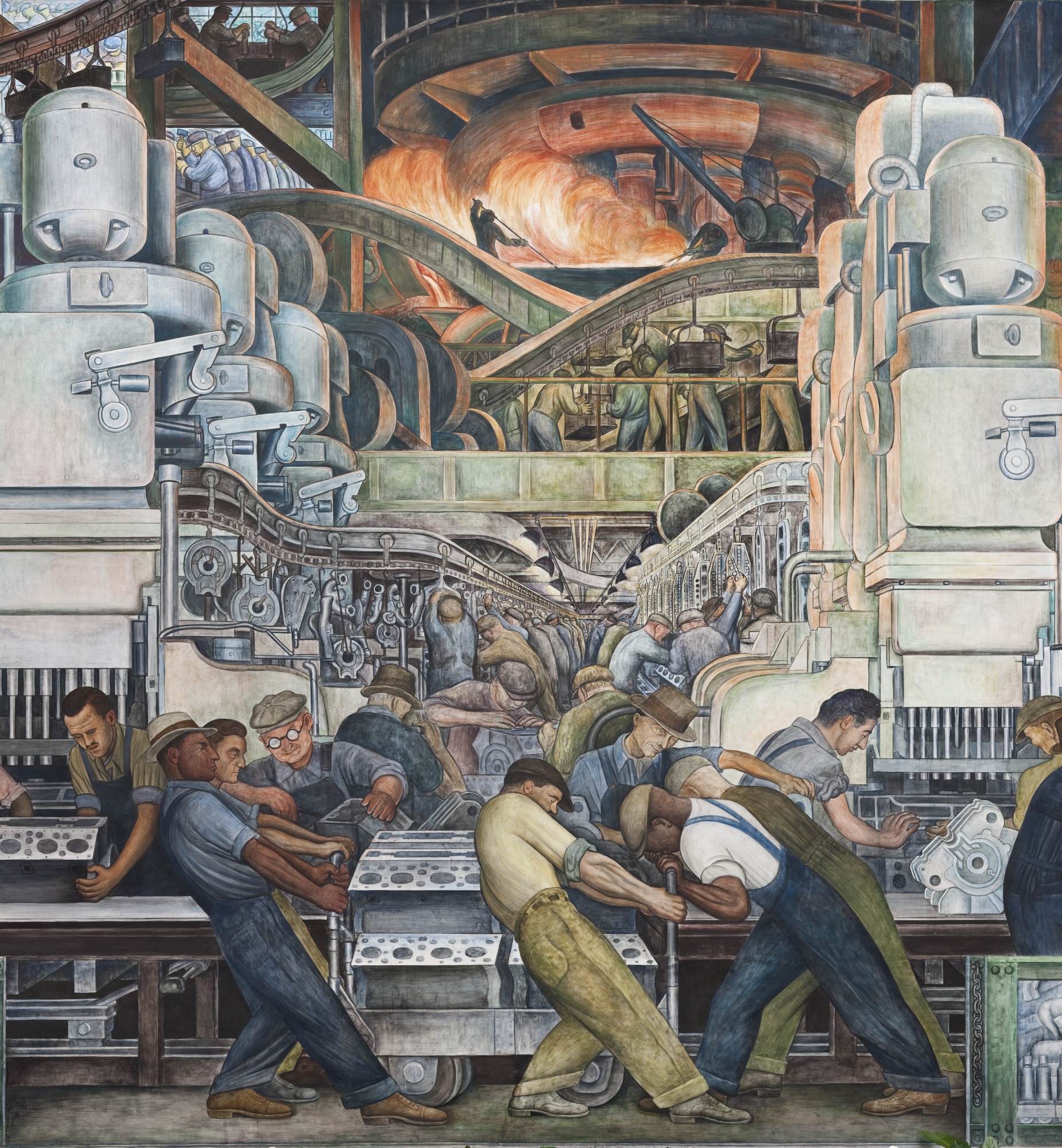
One of the greatest car paintings ever made is not, as one would expect, a single portrait of a single car. No, it’s a mural. And it isn’t just one mural on one wall, it goes on and on in room after room. And as you will see, it is powerful, evocative and controversial.
Uma das maiores pinturas de carros já feitas não é, como seria de esperar, um único retrato de um único carro. Não, é um mural. Não é apenas um mural na parede, ele continua em sala após sala. Como você verá, é poderoso, evocativo e controverso.
Commissioned in 1932 by Museum Director William Valentiner, the murals, collectively known as Detroit Industry, cover all four walls of the Garden Court in the Detroit Institute of Arts Museum, and number 27 in all. Bankrolling it was Henry Ford’s son, Edsel B. Ford, then president of the Ford Motor Company, who was trying in every way to escape the grinding pressure imposed by being the son of the most famous industrial leader in the world.
Encomendado em 1932 pelo diretor do Museu William Valentiner, os murais, coletivamente conhecidos como 'Detroit Industry', cobrem todas as quatro paredes da Garden Court no Museu do Instituto de Artes de Detroit e são em número de 27 no total. O financiador foi o filho de Henry Ford, Edsel B. Ford, então presidente da Ford Motor Company, que tentava de todas as maneiras escapar à pressão imposta por ser filho do líder industrial mais famoso do mundo.
The artist was Mexican Diego Rivera, (1886-1957) who set up house in Detroit while he painted the mural, a job that took him eight months. By choosing to work in murals, he gave the public a chance to see artwork which they might not if held in private collections and galleries. He took commissions for the painting of murals because he believed by using (preferably public) walls as his canvas, he helped revive the mural as an art form in the U.S. Though he died more than half a century ago, he is still among the most revered figures in Mexico, both for leading his country’s artistic renaissance and bringing to the new world a fresh appreciation of the of the mural genre.
O artista foi o mexicano Diego Rivera, (1886-1957), que se mudou para Detroit enquanto pintava o mural, um trabalho que levou oito meses. Ao optar por trabalhar em murais, ele deu ao público a chance de ver obras de arte que não veriam normalmente por estarem em coleções e galerias particulares. Ele recebeu comissões pela pintura de murais porque acreditava que, ao usar paredes (de preferência públicas) como tela, ele ajudava a reviver o mural como uma forma de arte nos EUA. Embora ele tenha morrido há mais de meio século, ele ainda está entre as figuras mais reverenciadas no México, tanto por liderar o renascimento artístico de seu país quanto por trazer ao novo mundo uma nova apreciação do gênero do mural.
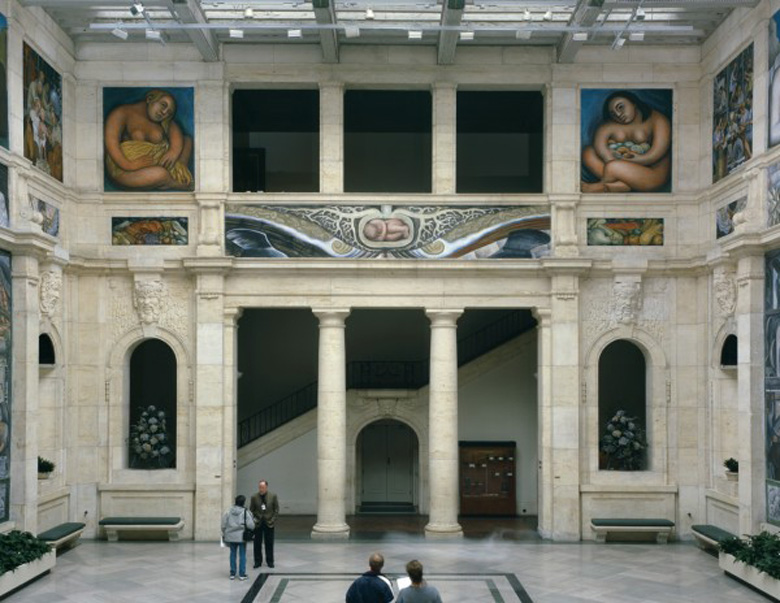
It is best to look at the murals in chronological order, starting with the east wall which depicts a baby in the bulb flanked by two fertility figures and fruits and vegetables indigenous to Michigan. Rivera liked to connect human endeavors to earth and nature. Every icon in the fresco cycle is meant to play off something depicted in another part of the room, such as the east wall’s agricultural symbols playing off the west wall’s technology.
É melhor ver os murais em ordem cronológica, começando com a parede leste, que mostra um bebê numa lâmpada, ladeado por duas figuras de fertilidade e frutas e legumes nativos de Michigan. Rivera gostava de conectar os esforços humanos à terra e à natureza. Cada ícone do ciclo de afrescos serve para exibir algo representado em outra parte da sala, como os símbolos agrícolas da parede leste, reproduzindo a tecnologia da parede oeste.
A member of the Mexican Communist Party, Rivera was expelled in 1929 because of his suspected ties with the Russian politician/philosopher Leon Trotsky. Despite his leftist leanings, Rivera actually got on pretty well with Edsel Ford, the arch-capitalist who was authorizing a communist to do the murals in his auto plant. But, says art aficionado/historian Clyde Berryman, “This also brought Rivera problems of his own from the left who accused him of cozying up to capitalists, of being a ‘fake red millionaire.’” The relationship with capitalists did not go so well for Rivera with the Rockefellers, who commissioned him to do a mural at Rockefeller Center, but after it was done had it destroyed under pressure from those who said they were purveying Communist propaganda.
Membro do Partido Comunista Mexicano, Rivera foi expulso em 1929 por causa de seus suspeitos laços com o político / filósofo russo Leon Trotsky. Apesar de suas inclinações esquerdistas, Rivera se deu muito bem com Edsel Ford, o arqui-capitalista que autorizava um comunista a fazer os murais em sua fábrica de automóveis. Mas, diz o aficionado / historiador de arte Clyde Berryman: "Isso também trouxe problemas a Rivera da esquerda, que o acusaram de agradar aos capitalistas, de ser um 'falso milionário vermelho'". O relacionamento com os capitalistas não foi tão bem para Rivera com os Rockefellers, que o contrataram para fazer um mural no Rockefeller Center, mas depois que isso foi feito, ele foi destruído sob pressão daqueles que disseram estar fornecendo propaganda comunista.
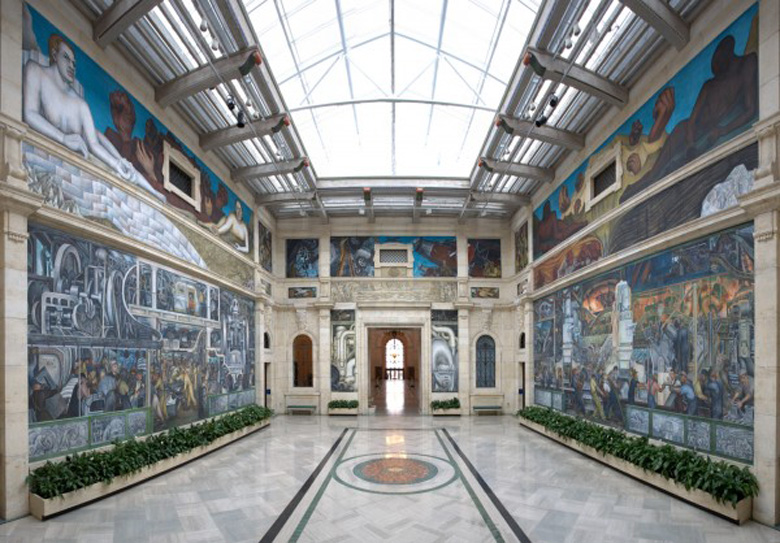
Looking toward the west wall one can see the breadth and scope of the murals.
Olhando para a parede oeste, pode-se ver a amplitude e o alcance dos murais.



Há detalhes intrigantes, como esse :
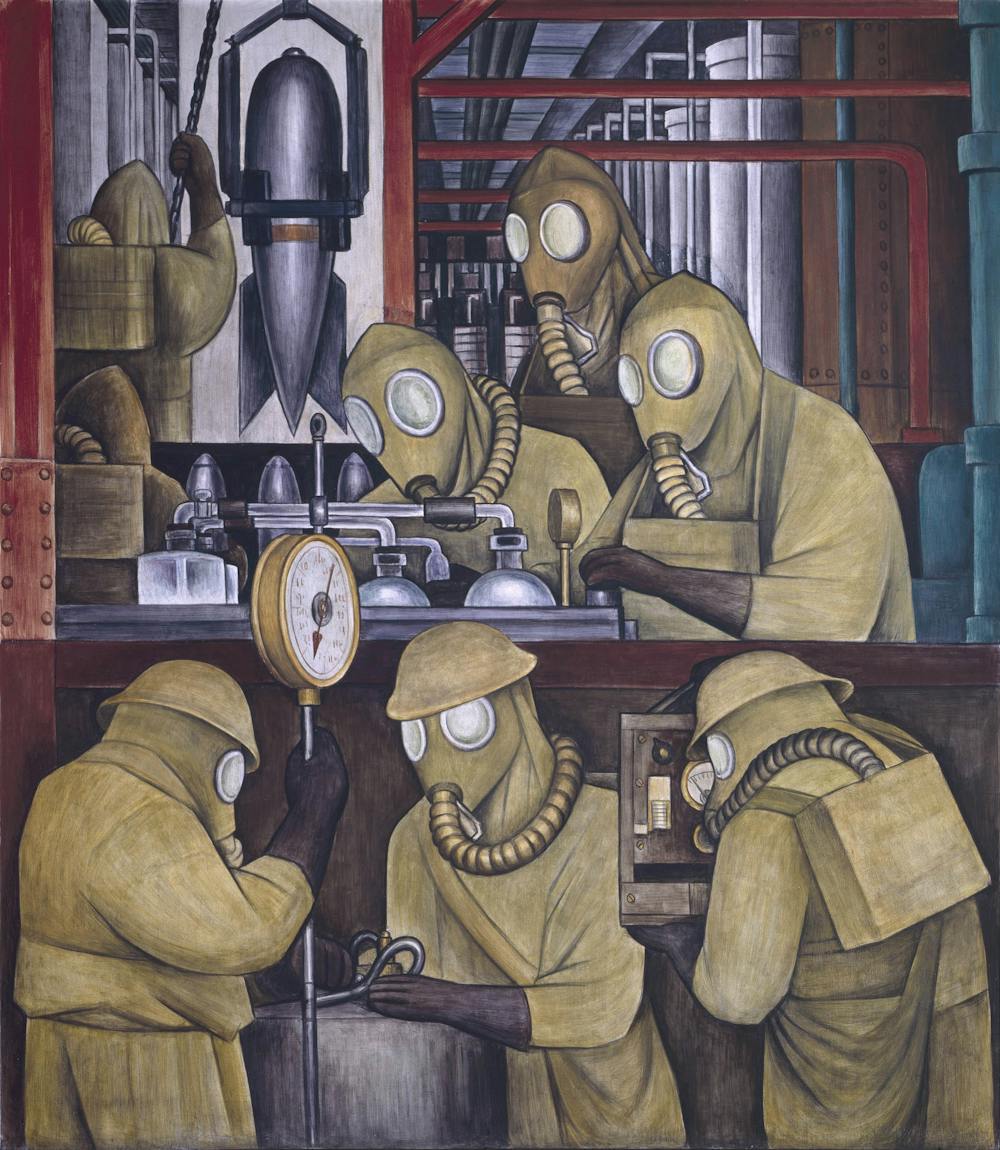
Afinal era uma industria de automoveis ou de artefatos explosivos quimicos ?

Os baroes da Industria olhando os trabalhadores, com a regua na mao

Ha muitos detalhes !

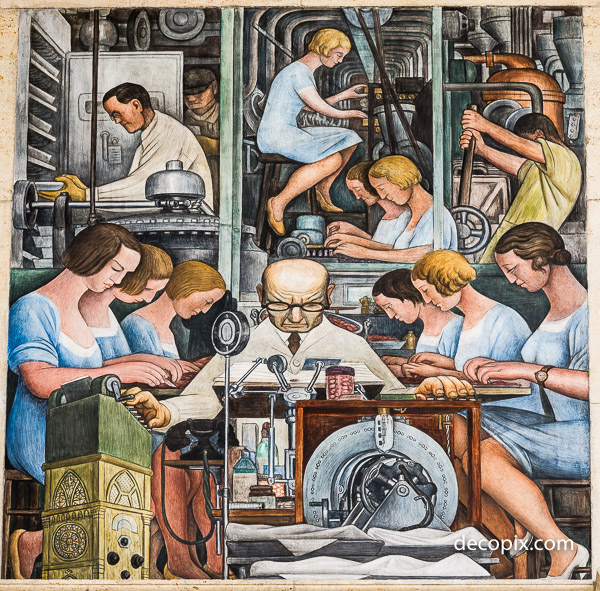
Art Decó total !
Source : https://www.velocetoday.com/automobile-art-and-the-detroit-industry-murals/
https://www.dia.org/riveracourt
Nenhum comentário:
Postar um comentário